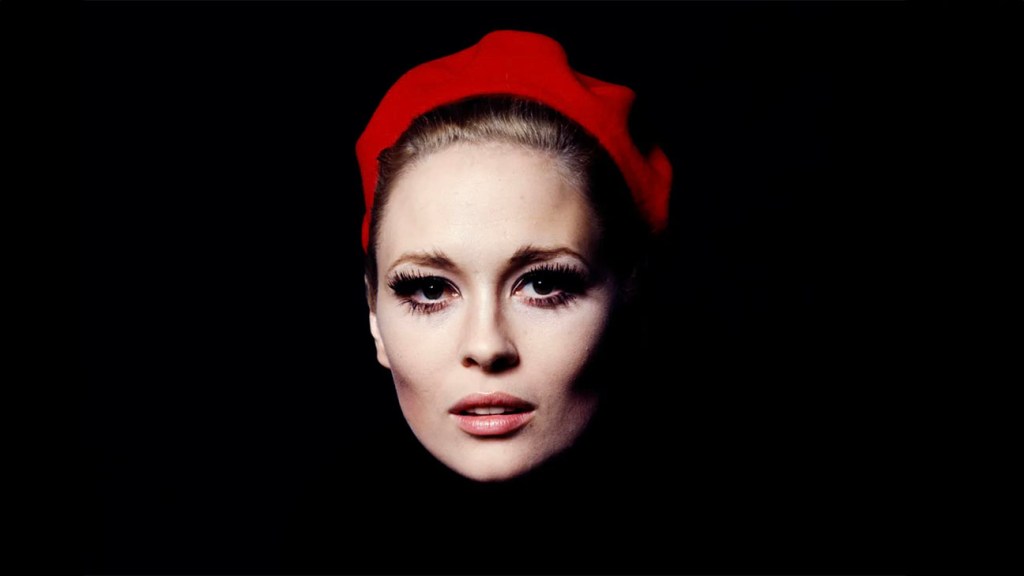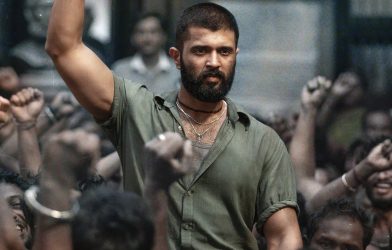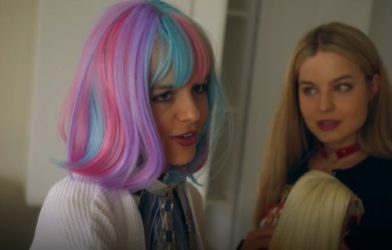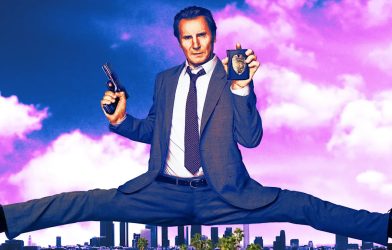
‘Faye’
Jerry Schatzberg
Early in Faye, Laurent Bouzereau’s entertaining portrait for HBO of screen legend Faye Dunaway, Bette Davis in a Johnny Carson clip names her without hesitation as the one star with whom she would never work again. Considering this is clearly a very authorized and deeply respectful bio-doc, it’s surprising how candidly it digs into the star’s reputation for being temperamental and demanding. Dunaway even plays into it herself — the first words we hear are her impatiently nudging the director to roll cameras on the present-day interview that binds the many recollections and self-reflections together.
“We need to shoot; I’m here now, come on,” says an exasperated Dunaway. Seated on a comfortable-looking sofa in an airy New York apartment living room, she huffs, “This is the worst seat in the world. I’m not happy with anything here.” But when she then snaps, “I need a glass of water, not a bottle,” a quick complicit eye roll at the camera suggests she’s aware enough to own the reputation as part of the persona she created.
Faye
The Bottom Line
Authorized but refreshingly frank.
Venue: Cannes Film Festival (Cannes Classics)
With: Faye Dunaway, Liam Dunaway O’Neill, Annette Insdorf, Barry Primus, Chris Andrews, David Itzkoff, Hawk Koch, James Gray, Jay Zimmer, Jerry Schatzberg, Julie Salamon, Mara Hobel, Mark Harris, Michael Koresky, Mickey Rourke, Margaret M. Roth, Robin Morgan, Rutanya Alda, Sharon Stone, Tova Laiter
Director: Laurent Bouzereau
1 hour 30 minutes
But is Dunaway “difficult,” a word applied far more frequently to women in the entertainment industry than men? Or is she simply a “perfectionist,” fastidious about every detail? The doc implicitly makes the case that the two words are almost interchangeable for movie actresses. It also makes clear, through Dunaway’s own admission, that the volatile mood swings of bipolar disorder caused erratic behavior throughout her career.
Her son Liam Dunaway O’Neill wonders if manic depression wasn’t always a part of his mother’s performances: “If she wasn’t in so much pain, would she have been that good?”
Dunaway acknowledges a tendency to keep her emotions bottled up and recalls being coaxed by Elia Kazan, during her early days with Lincoln Center Repertory Company, to let it all out in her performances: “He taught me that my feelings were my strength.” Her startling ferocity in a well-chosen clip from her Oscar-winning role in Network seems to support that theory.
The inherent vanity of legacy docs like Faye, made with the subject’s participation, make it unusual for the filmmakers to be so forthright about one of the thornier aspects of a celebrated career. Let alone in the film’s opening minutes. But addressing those issues up front has a disarming effect here. Dunaway clarifies that she’s not making excuses: “I’m still responsible for my actions.” But hearing her talk matter-of-factly of her struggles with mental illness, and later alcoholism, puts the febrile intensity of her screen work in a new light.
“She’s all of her characters in one in real life,” observes her son. “She put a little bit of herself into her characters and a little bit of her characters into herself.”
After premiering in Cannes — where Dunaway has been a frequent attendee for years and where a stunning 1970 photograph of her by Jerry Schatzberg was chosen for the official festival poster in 2011 — Faye will debut on HBO and be available to stream on Max later this year.
Having provided some personal context, Bouzereau and editor Jason Summers proceed chronologically, starting with a recap of Dunaway’s upbringing as a child of the South — named Dorothy Faye — who moved around every couple of years when her father, a non-commissioned U.S. Army officer, was restationed. Dunaway says that experience taught her not to form deep attachments and probably explains why the average duration of her romantic relationships is two years.
She says little about her marriage to British photographer Terry O’Neill, beyond his staging of the famous shot by the Beverly Hills Hotel swimming pool the morning after her Oscar win. Even less time is spent on her first husband, rocker Peter Wolf. But she muses that Marcello Mastroianni, the married Italian screen idol with whom she began a clandestine relationship during the shoot of A Place for Lovers, may have been the love of her life.
The film traces her acting career back to the move from neighborhood playhouses to college productions while at Boston University. By Dunaway’s account, she was on Broadway in A Man for All Seasons just six days after graduating. New York stage exposure brought her to the attention of producer Sam Spiegel, who put her in her first movie, The Happening, in 1967. Otto Preminger’s Hurry Sundown followed that same year.
But it was Bonnie and Clyde that made her a star, with director Arthur Penn prevailing over the reservations of his leading man and producer Warren Beatty to cast Dunaway in a role for which bigger names were being considered. The industry was phasing out the self-censorship of the Production Code at the time, and the gangster film rewrote the rules on the depiction of violence and sexual dysfunction on screen.
“With Bonnie and Clyde, you got the feeling that the Band-Aid had been ripped off,” says James Gray, who directed Dunaway in The Yards. Gray is one of a handful of collaborators sharing insights, along with Mickey Rourke (Barfly), Hawk Koch (Chinatown), Barry Primus (Puzzle of a Downfall Child) and Schatzberg, who made his feature directing debut on the latter film and was romantically linked with Dunaway for a time.
Also interviewed are journalists and film scholars, including Annette Insdorf, Mark Harris, David Itzkoff, Julie Salamon and Michael Koresky. Longtime friend Sharon Stone, wearing a lapel flower that’s bigger than her head, talks of Dunaway’s generosity and friendship. That started when she asked to observe Dunaway in a photo shoot and was told, “Sure kid, just stay out of my eye line.”
Significant attention is given to Chinatown, including an amusing anecdote about director Roman Polanski plucking a stray hair from Dunaway’s Marcel wave, unleashing a tirade of profanities. Dunaway good-humoredly notes that her co-star Jack Nicholson affectionately dubbed her “Dread,” as in “The Dreaded Dunaway.”
Just as Chinatown tapped into Watergate-era awareness of abuses of power, Network was also a zeitgeisty release, pointing up the amorphousness of truth in television, as profit was completely obscuring any vestige of the medium as a public service. Director Sidney Lumet in an archival interview recalls telling Dunaway that her character, a ruthless programming executive who cares only about ratings, had zero vulnerability and if she attempted to give her any he would cut it.
Commentators discuss the anomaly of a woman being portrayed as no less cutthroat a power player than any man, and in a sense it was a ballsy move for Dunaway, at the height of her fame, to take on a role fundamentally lacking in human decency. Those observations fit into the general picture of her breaking the stereotypical mold of screen women by going beyond the standard wife, girlfriend or mother.
Some films from her peak career stretch are given cursory treatment, like The Thomas Crown Affair, while others like Three Days of the Condor, Little Big Man or The Towering Inferno are represented only in brief clips or production stills, if at all.
But anyone expecting Dunaway to gloss over the inadvertent cult classic, Mommie Dearest, will be surprised by the scrutiny it receives. Despite expressing an “enormous kinship” with Joan Crawford as a character, Dunaway looks back on the biopic as a career misstep, blaming director Frank Perry for giving her no help in shaping her scenes or reining in her performance. Stone agrees that the performance was less an issue than the way Perry framed the character: “You tell me how you play that part.”
Mara Hobel, who played the young Christina Crawford in some of the most overwrought scenes of child abuse, stresses that Dunaway established real trust between them and she never had reason to feel afraid. She gets emotional discussing the movie’s derisive reception.
Aficionados of Dunaway as a fabulous camp icon will likely be disappointed by the minimal representation given to her villainess role in Supergirl; her Helmut Newton-style fashion photographer with clairvoyant visions of murder in Eyes of Laura Mars; or her wild turn as a 17th century aristocrat turned highway robber in The Wicked Lady, in which Dunaway literally whips the clothes off a romantic rival at her lover’s public execution.
It seems a shame that she’s unwilling to embrace some of the fun stuff, and Bouzereau, whose credits include behind-the-scenes materials on Chinatown, Network and Mommie Dearest, obviously knows who’s the boss. He’s careful not to try steering her anyplace she doesn’t want to go.
While brief acknowledgement is made of her roles in Arizona Dream, Don Juan DeMarco and The Messenger, it’s understandable that Dunaway chooses not to dwell on the precipitous downturn her career took, particularly in the ’90s. The Yards and the 1998 TV movie Gia are among the few titles from that period that left any kind of cultural footprint.
This is addressed only glancingly in a reference to her career as “before and after Mommie Dearest,” with the unstated subtext that the industry seldom gives women another chance after such a stinging failure.
One of the biggest disappointments for Dunaway was having to abandon her film of the Terrence McNally play about Maria Callas, Master Class, for which she bought the rights after headlining the national tour. The project started shooting, with Dunaway adapting the screenplay, directing and starring, but it fell apart when financing dried up. “I wanted too much at the time,” she says, conceding that she should have hired an experienced director.
For those of us who have loved Faye Dunaway in movies, Bouzereau’s doc will be bittersweet viewing. It re-examines her run of brilliant, blazing performances in a handful of New Hollywood classics but also leaves us to ponder how brutally she was sidelined, uncommonly so for a movie star of her stature. Fortunately, on the evidence presented here, Dunaway seems accepting of the hills and valleys of her career, emerging from this portrait as a woman whose strength outweighs her fragility.









